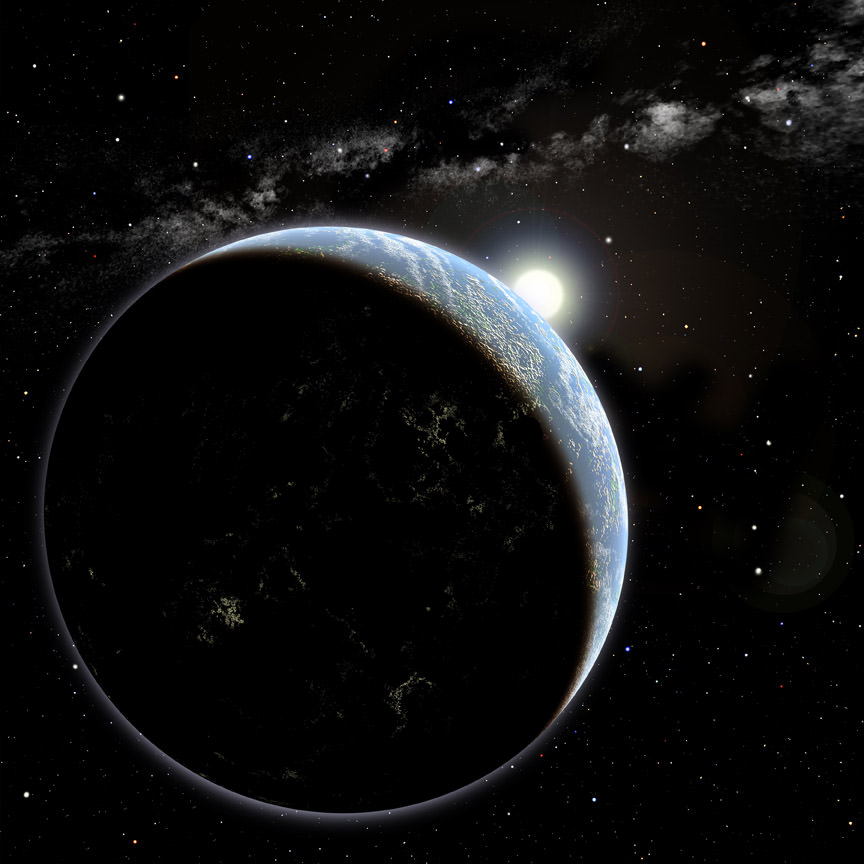[/caption]
It might not be polite to ask a lady her true age, but when it comes to stars it’s not as easy as checking a driver’s license. From our point of view, all stars can look pretty much the same – so how do we tell one that’s one billion years old from one that ten billion? The answer could be stellar spin rate.
In Monday’s 218th meeting of the American Astronomical Society, astronomer Soren Meibom of the Harvard-Smithsonian Center for Astrophysics presented his findings. “A star’s rotation slows down steadily with time, like a top spinning on a table and can be used as a clock to determine its age.” says Meibom. “Ultimately, we need to know the ages of the stars and their planets to assess whether alien life might have evolved on these distant worlds. The older the planet, the more time life has had to get started. Since stars and planets form together at the same time, if we know a star’s age, we know the age of its planets too.”
By determining a star’s age in advance, it assists astronomer’s working with projects like Kepler. Knowing where to begin in a galaxy filled with stars helps us to understand how planetary systems form and evolve and why they are so different from each other. In some circumstances, like galactic star clusters, we’re pretty much on the mark at knowing a star’s age because we believe they all formed about the same time. However, for a lone star that harbors planets, determining age is much more difficult. Measuring the rotation of stars in clusters with different ages reveals exactly how spin and age are related. Then by extension, astronomers can measure the spin of a single isolated star and calculate its age.
Just how is calculating stellar spin rate done? Try exactly how we know our own Sol’s rotation – sunspots. Each time a “star spot” rotates across the visible surface, it dims ever so slightly. By measuring how long these changes take place gives us substantial clues to just how fast a star rotates. Although these changes are minute and decrease as a star ages, the sensitivity of the Kepler spacecraft was designed specifically to measure stellar brightnesses very precisely in order to detect planets (which block a star’s light ever so slightly if they cross the star’s face from our point of view).
But this task was far from easy. In a four year preparatory study conducted with specially designed instrument (Hectochelle) mounted on the MMT telescope on Mt. Hopkins in southern Arizona, Meibom and his colleagues sorted out information in nearly 7000 individual stars and used Kepler data to determine how fast those stars were spinning. Their findings included stars with rotation periods between 1 and 11 days, confirming that gyrochronology is an exciting new method to learn the ages of isolated stars.
“This work is a leap in our understanding of how stars like our Sun work. It also may have an important impact on our understanding of planets found outside our solar system,” said Meibom.


So how big is the age difference between 1 and 11 days stars?
I guess it must also vary on a type of a star, but maybe there’s age % difference in general?
Also how slow are different stars when they change? 🙂 Either going SN or giant.
VERY interesting! Spun down during mass ejection phases or spun up during condensation… hmm..
And they know how fast the star was spinning in the first place HOW?
Good point!
I thought it was merely an estimate of aging from comparing spin down rates in, say clusters, but googling gyrochronology showed me (partly) wrong:
“The technique builds on an insight of Skumanich in 1972 who noticed that another measure of stellar rotation changes steadily with the ages of star clusters. However, the related imprecision greatly compromises the accuracy of ages derived using this insight alone. Measurements made at Lowell Observatory in the late 1980s showed that rotation also depends on the color/mass of a star. Gyrochronology combines and develops these two insights into a precise way of deriving stellar ages, and shows that it works even for single field stars. The paper shows that the rotation period of a star (whether in a cluster or in the field) can be written as a simple product of two separable functions of its age and color. This mathematical behavior provides the key simplification that makes gyrochronology unique.”
With correction for color, it is wickedly precise and general (“in the field”) in the context:
“”The relationship between age, color, and rotation period has particular and useful mathematical properties that simplify the analysis and allow the uncertainties to be calculated easily.” A star’s color is a proxy for its mass or surface temperature. The uncertainties in gyrochronology ages are typically 15 percent; with preexisting stellar aging methods the uncertainties range from 50 to 100 percent.”
The rival method of chromospheric method described in the link is ~ 50 % uncertain.